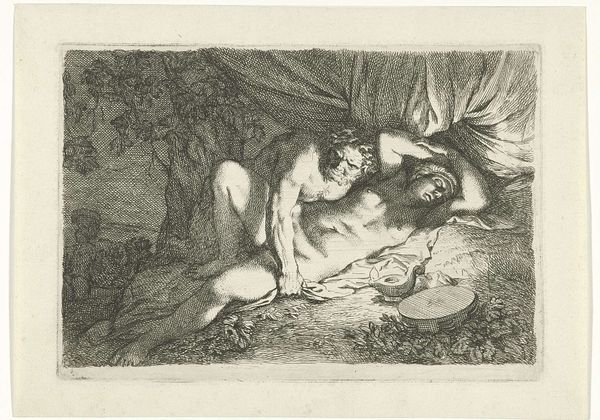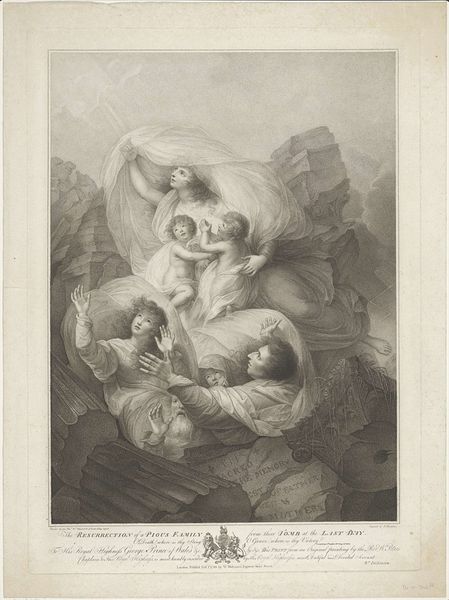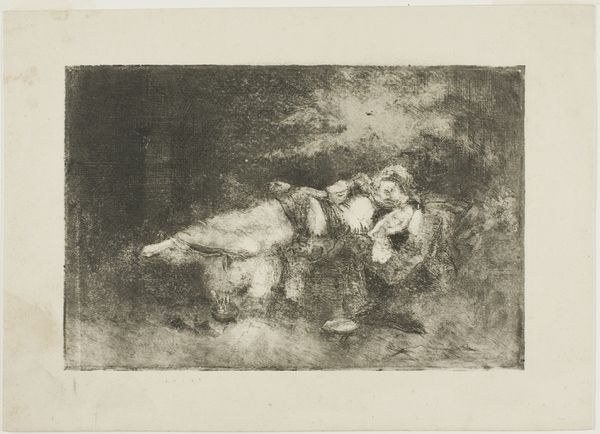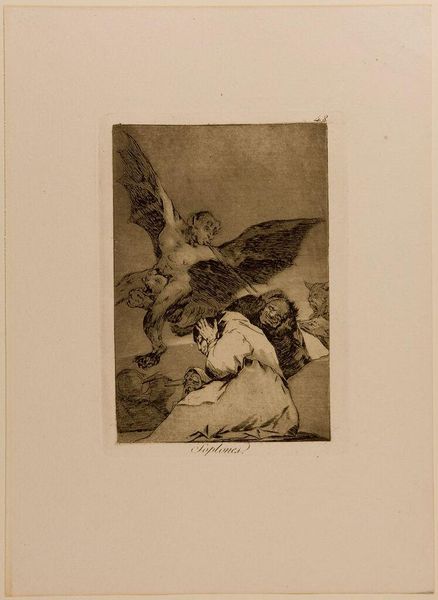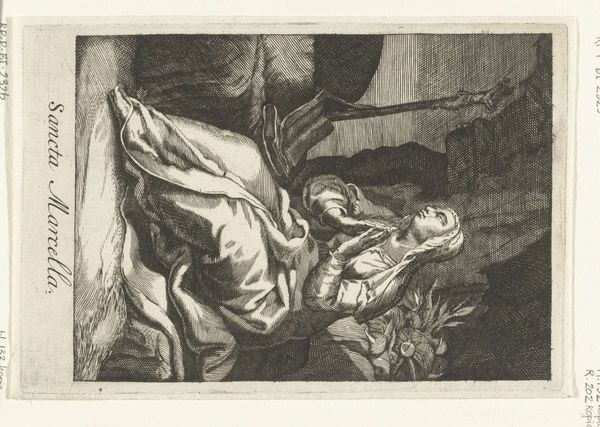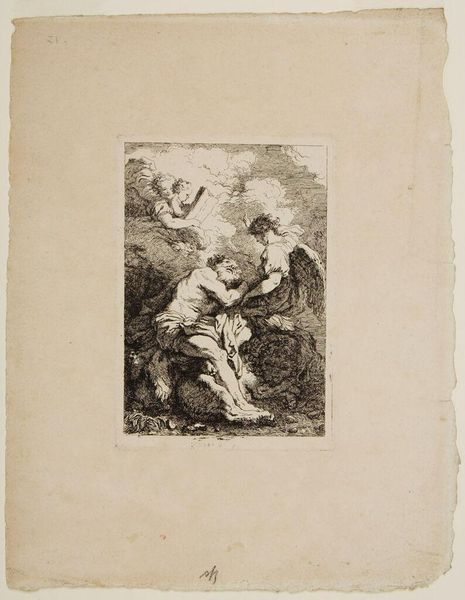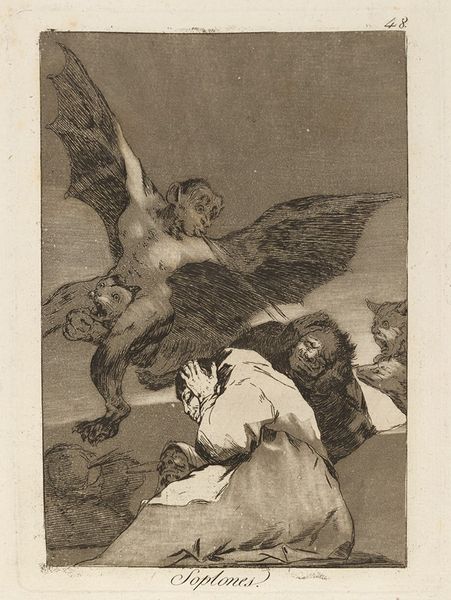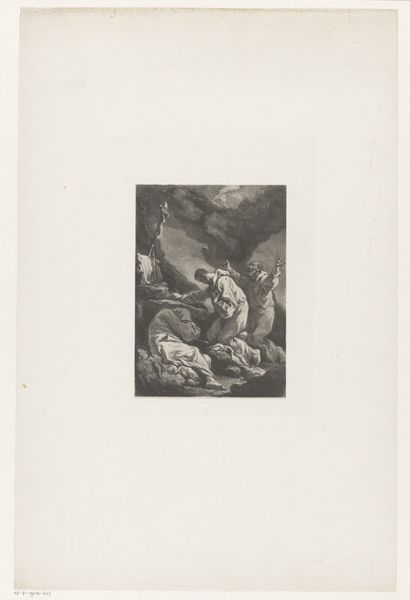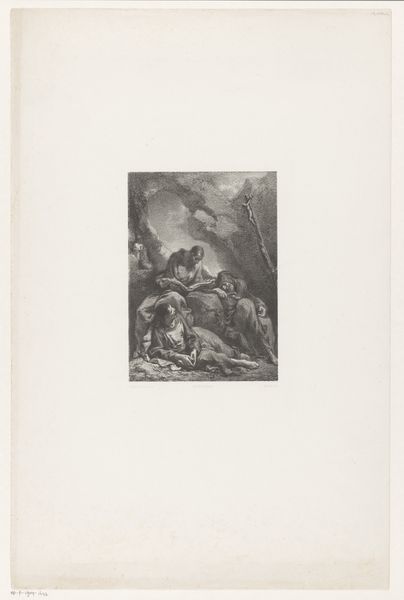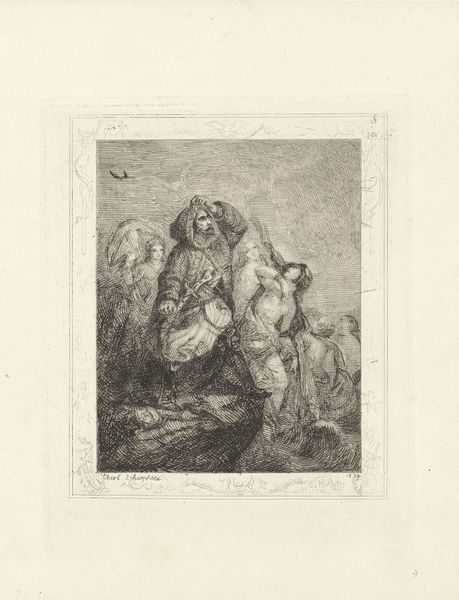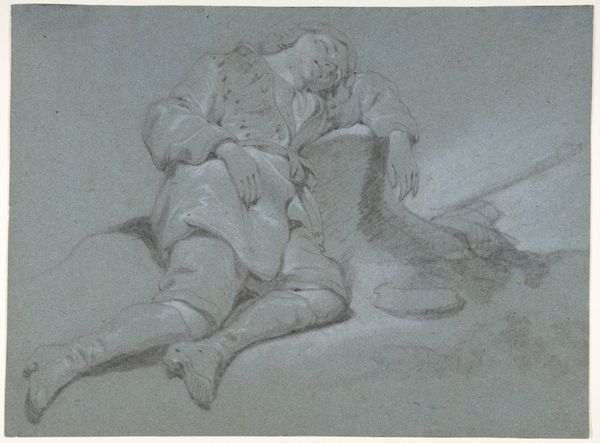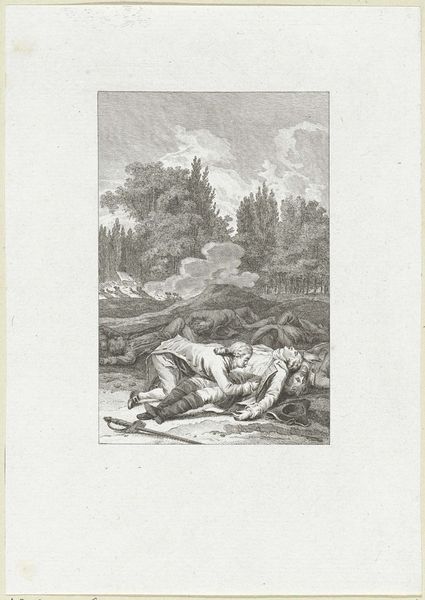
print, etching
#
narrative-art
# print
#
etching
#
charcoal drawing
#
figuration
#
romanticism
#
19th century
Copyright: Public Domain: Artvee
Curator: Goya's etching, "Buen Viage," created around 1796-97, plunges us into a world of shadows and distorted forms. Editor: The initial feeling I get is one of unrest, almost terror. It's dark, the figures seem caught in a vortex of panic, and there's a real sense of impending doom. Curator: It's from "Los Caprichos," a suite of prints where Goya critiqued the follies and superstitions of Spanish society, so let's not take "Buen Viage," or "Good Journey," at face value. The work reveals Goya’s attitude towards journeys taken at a price, or possibly the last one of our life. Editor: The symbolic weight feels very heavy. The central figure seems burdened, not only physically, but spiritually. And the faces around him—a mask of agony, terror, desperation... each seems like a manifestation of inner turmoil. They bring into the image something phantasmal and deeply upsetting, a dance macabre of anxieties, and perhaps demons. Curator: The etching process itself, the use of aquatint, creates these blurred, hazy forms which contributes to that sense of unease, that uncertain world. There's also the social context; it appeared at a moment of religious reform which was aimed to limit popular festivities, such as the Carnival. In this context, and considered that some of the Los Caprichos allude to Carnival processions and traditional dances, this etching possibly alludes to the consequences for society as the decline of Carnival occurs. Editor: Goya’s technique is fascinating. The distortion of the figures isn't merely grotesque; it amplifies their emotions. The journey takes on multiple layers of significance: death and possibly a critique of institutional structures, it certainly delves into the dark, repressed corners of the human psyche, evoking very visceral response to a sense of loss and a journey without return. The journey to nowhere. Curator: Yes, considering this is an artist operating during the Enlightenment, but who also had an unwavering commitment to explore darker sides of humanity makes “Buen Viage” powerful. The personal merged with the social critique creating very striking image. Editor: It all culminates in a rather affecting composition, and the lasting cultural symbolism that surrounds us when it's time to depart, even when we would not necessarily like to embark. Curator: Absolutely, it offers, even now, a grim reminder of the price of blind faith, fear, and collective societal delusion, captured in its inky shadows.
Comments
No comments
Be the first to comment and join the conversation on the ultimate creative platform.
